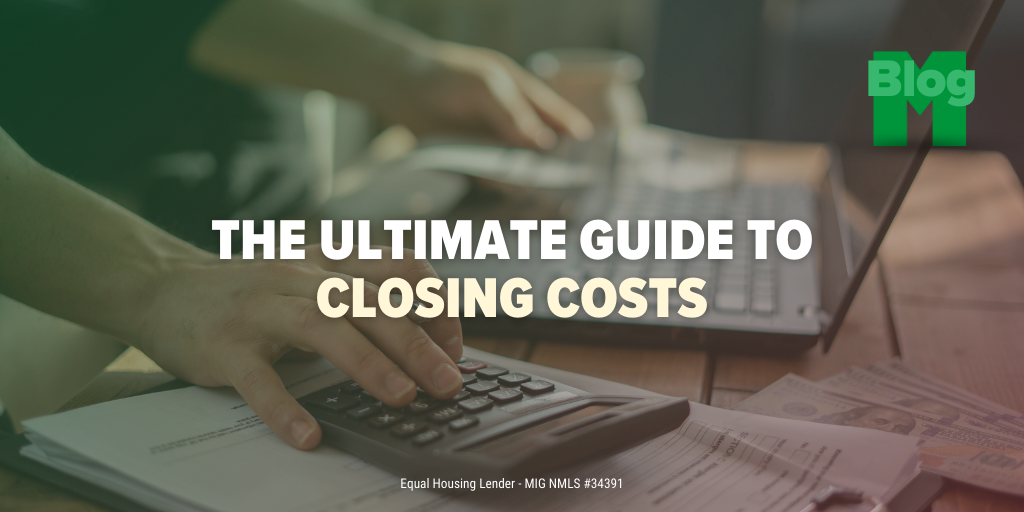
When buying a home, most people focus on saving for a down payment, but there’s another set of expenses you need to be prepared for: closing costs. These costs can sometimes catch buyers by surprise, but understanding them ahead of time can help you budget more effectively and avoid any last-minute financial stress. In this ultimate guide to closing costs, we’ll break down what they are, what to expect, and how they differ from your down payment. Let’s dive in!
1. What Are Closing Costs?
Closing costs are the fees and expenses you need to pay when finalizing a home purchase. They cover a range of services required to complete the transaction and transfer ownership from the seller to the buyer. These costs typically range from 2% to 5% of the home’s purchase price, depending on various factors like the loan type, the lender, and the location of the property.
Closing costs can include, but are not limited to:
- Loan Origination Fees: Fees charged by the lender to process your loan application.
- Appraisal Fees: The cost of having a professional appraiser determine the market value of the home.
- Home Inspection Fees: The cost of inspecting the home to identify any potential issues or needed repairs.
- Title Insurance: A policy that protects you and the lender against any future claims or disputes over the property’s ownership.
- Attorney Fees: In some states, an attorney is required to oversee the closing process.
- Prepaid Costs: Such as homeowner’s insurance, property taxes, and interest that needs to be paid upfront.
- Recording Fees: Charged by your local government to officially record the sale of the property.
These fees and others add up, and it’s important to know what you’re paying for so you can budget accordingly and avoid surprises on closing day.
2. How Do Closing Costs Differ from a Down Payment?
It’s easy to confuse closing costs with a down payment, but they are entirely different expenses that serve separate purposes in the home-buying process:
- Down Payment: This is the portion of the home’s purchase price that you pay upfront to reduce the amount you borrow. It directly contributes to the equity you have in your home from day one. For example, if you’re buying a $300,000 home and put down 20%, your down payment is $60,000. This amount goes directly toward paying for the house and is not included in the calculation of closing costs.
- Closing Costs: These are additional fees associated with the services needed to close the deal, like appraisals, inspections, and loan processing fees. Unlike the down payment, which reduces the loan amount, closing costs are used to cover the administrative and service expenses of buying a home.
Think of it this way: your down payment is your financial stake in the property, while closing costs are the fees that help cover the paperwork, legalities, and administrative tasks that make the transaction official.
3. Can You Negotiate Closing Costs?
Yes! Closing costs can often be negotiated. Here are some ways to potentially lower them:
- Ask the Seller to Contribute: Depending on the market, you might negotiate with the seller to cover some or all of your closing costs as part of the deal.
- Consider a No-Closing-Cost Mortgage: Some lenders offer this option, where the closing costs are rolled into the mortgage itself. However, this typically comes with a higher interest rate, so you’ll want to weigh the pros and cons carefully.
4. Preparing for Closing Day
Being prepared for closing day means having all your financials in order and knowing exactly what you owe. Here are some steps to take:
- Review the Loan Estimate and Closing Disclosure: Your lender will provide a Loan Estimate at the beginning of the process and a Closing Disclosure at least three days before closing. These documents provide a breakdown of your closing costs, giving you time to review and ask questions.
- Bring Certified Funds: On closing day, you’ll need to bring a certified check or arrange a wire transfer for the down payment and closing costs. Be sure to know the exact amount needed and verify payment instructions to avoid any last-minute hiccups.
5. Work with a Trusted Loan Officer
Navigating closing costs can feel overwhelming, but you don’t have to go it alone. Working with a knowledgeable Loan Officer can make a big difference in understanding these costs and how to manage them. At Mortgage Investors Group, our Loan Officers are here to help you understand every detail, from the initial loan estimate to the final closing disclosure.
The Bottom Line
Closing costs are an essential part of the homebuying process, and understanding them is key to avoiding surprises and ensuring a smooth closing. By knowing what to expect and how these costs differ from your down payment, you can better prepare financially and confidently move toward homeownership. Ready to learn more? Reach out to a Loan Officer at Mortgage Investors Group today to get started on your path to homeownership!
![Mortgage Investors Group in [Dynamic1]](../assets/images/mortgage-investors-group.svg)


